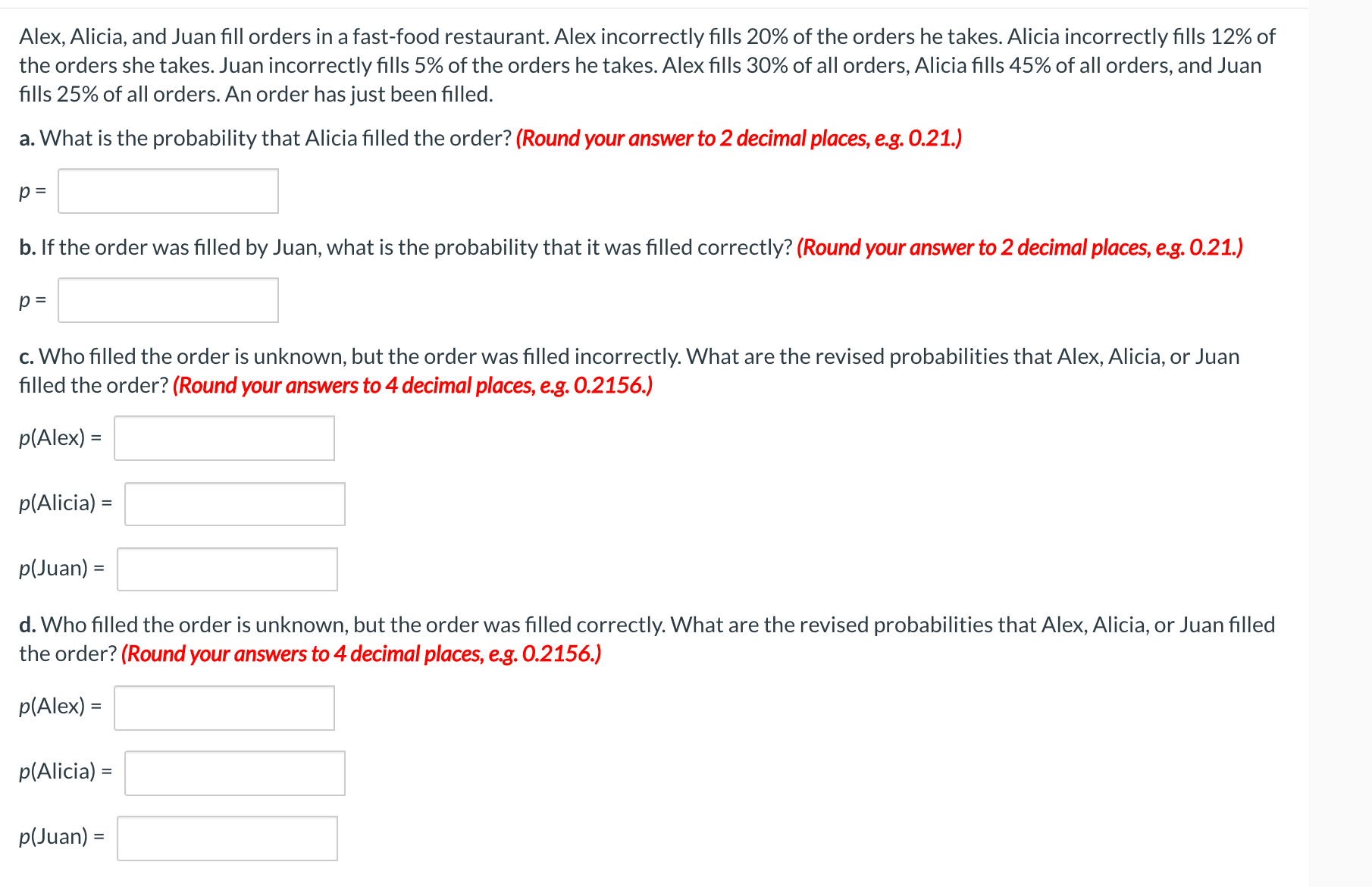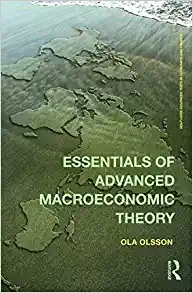


1)
Alex, Alicia, and Juan fill orders in a fast-food restaurant. Alex incorrectly fills 20% of the orders he takes. Alicia incorrectly fills 12% of the orders she takes. Juan incorrectly fills 5% of the orders he takes. Alex fills 30% of all orders, Alicia fills 45% of all orders, and Juan fills 25% of all orders. An order has just been filled. a. What is the probability that Alicia filled the order? (Round your answer to 2 decimal places, e.g. 0.21.) b. If the order was filled by Juan, what is the probability that it was filled correctly? (Round your answer to 2 decimal places, e.g. 0.21.) p= c. Who filled the order is unknown, but the order was filled incorrectly. What are the revised probabilities that Alex, Alicia, or Juan filled the order? (Round your answers to 4 decimal places, e.g. 0.2156.) p(Alex) = p(Alicia) = p(Juan) = d. Who filled the order is unknown, but the order was filled correctly. What are the revised probabilities that Alex, Alicia, or Juan filled the order? (Round your answers to 4 decimal places, e.g. 0.2156.) p(Alex) = p(Alicia) = p(Juan) =With the advent of online ordering, shipping has become more important to consumers. One survey showed that 80% of online consumers want same-day shipping. Another study showed that 24% of online consumers are shopping lovers who enjoy buying and purchase often. In addition, suppose that 61% of online consumers who are shopping lovers want same-day shipping. If an online consumer is randomly selected, what is the probability that *( Round your answers to 4 decimal places, e3. 0.2156.) "(Round your answer to 2 decimal places, es. 0.21.) a. The consumer wants same-day shipping and is a shopping lover? a: p: b. The consumer does not want same-day shipping, given that the consumer is a shopping lover? a: p: c. The consumer is not a shopping lover and the consumer does want same-day shipping? x p: d. The consumer does not want same-day shipping, given that the consumer is not a shopping lover? am p: According to a survey conducted by the American Pet Products Association, 68% of U.S. households own a pet. According to the Energy Information Administration, 31% of all US. households have trouble paying their energy bills. Suppose 17% of all U.S. households own a pet and have trouble paying their energy bills If a U.S. household is randomly sampled, (Round youranswers to 2 decimal places, as. 0.21.) a. What is the probability that the household owns a pet or is having trouble paying energy bills? p = b. What is the probability that the household owns a pet or is having trouble paying energy bills but not both? p = c. What is the probability that the household neither owns a pet nor is having trouble paying energy bills? p












